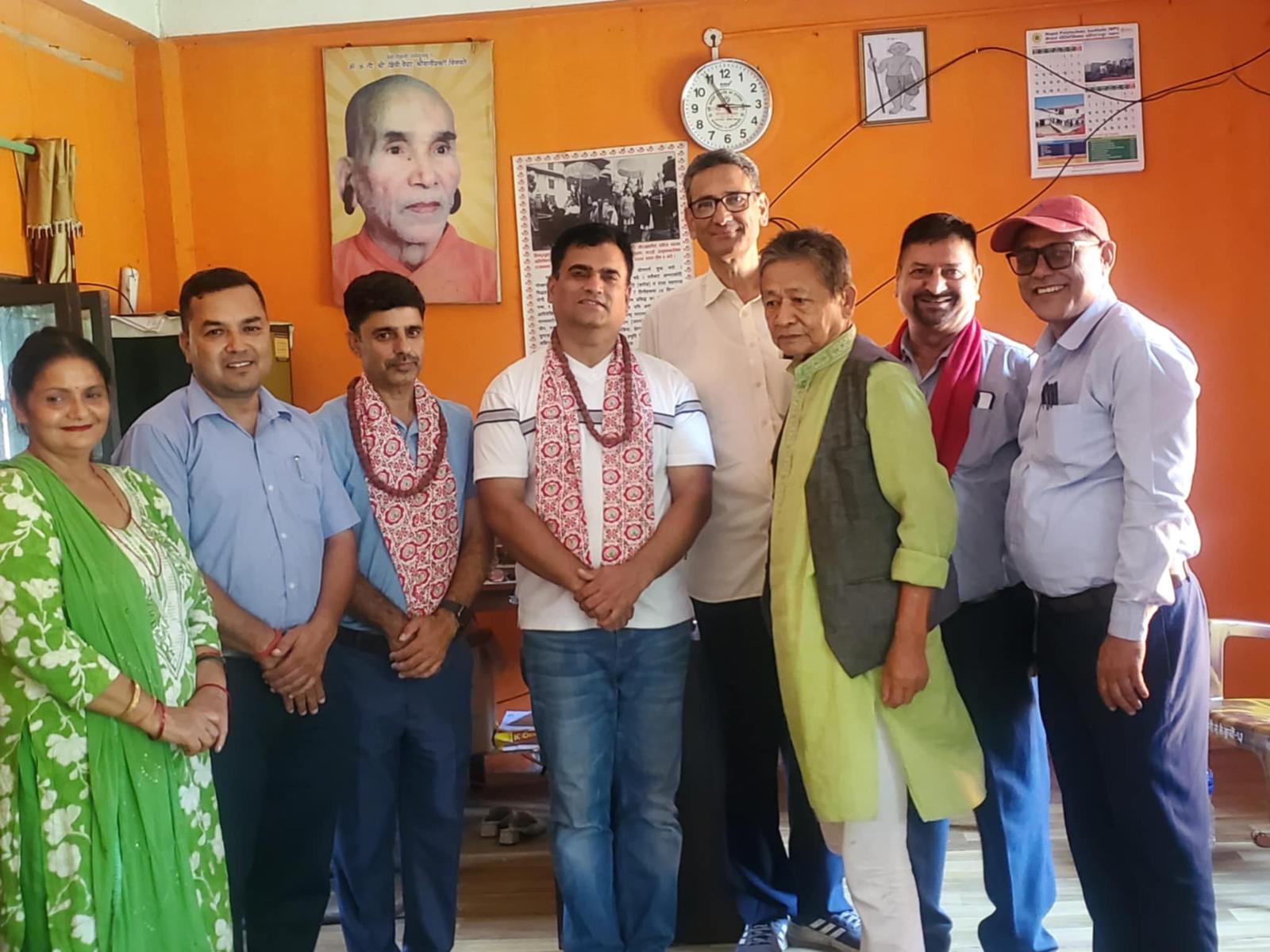Janaki Mandir: Jewel of Mithila and Symbol of Devotion




In the heart of Janakpur, there stands a temple that is more than just stone and mortar. Janaki Mandir is a living shrine, a place where faith, history, and everyday life come together in a way that feels timeless. For millions across Nepal and India, this is one of the holiest places linked to Goddess Sita—beloved daughter of King Janak and the eternal bride of Lord Rama. To walk into its courtyards is to step into the Ramayana itself, not as a distant legend but as something alive and present.
The story of the temple is as rich as the devotion it inspires. Locals call it the Nau Lakha Mandir, meaning “nine lakhs,” because it cost nine lakh gold coins to build—an extraordinary fortune in its time. Queen Vrisha Bhanu of Orchha State commissioned the temple in 1910, giving Janakpur a structure that would soon become its crown jewel. Yet the temple’s roots reach even further back. In 1657, a golden statue of Sita was said to have been found at this very spot. The saint Shurkishordas, regarded as the founder of modern Janakpur, also discovered images of Sita here and spent his life preaching the philosophy of Sita Upasana—devotion to Sita as the supreme goddess. Legends even say that this is the very ground where King Janak once performed worship of the Shiva-Dhanus, the divine bow that tested Rama’s strength in the Ramayana.
The temple itself feels like a palace from a dream. Its white domes and arches glisten in the sunlight, and the walls are painted in bright colors that reflect the vibrancy of Mithila. The architecture borrows from Rajput, Mughal, and Maithili traditions, creating a style that is at once grand and deeply local. Inside, idols of Sita, Rama, Lakshman, and Hanuman radiate serenity, while the sound of bells and the murmur of prayers fill the air. Just outside, artists sell Maithili paintings, women sing folk songs, and vendors offer garlands and sweets. The line between worship and daily life is thin here, and that is part of the magic.
Janaki Mandir has also endured hardship. When the massive earthquake struck Nepal in April 2015, parts of the temple were damaged, and sections of its walls collapsed. Yet devotion never wavered. Restoration began quickly, and today the temple stands tall again—a symbol not only of faith but of resilience.
What truly brings Janaki Mandir alive, though, are the festivals. The most spectacular of all is Vivaha Panchami, which takes place every year in November or December. This festival celebrates the divine marriage of Rama and Sita, and in Janakpur it feels as though the wedding is happening all over again. In the days leading up to the event, the city transforms into a stage. Streets are decorated with arches and lights, and pilgrims pour in from all over Nepal and India. A symbolic wedding procession arrives from Ayodhya, carrying the idols of Rama and his brothers, and they are welcomed at the temple with grandeur and joy.
On the main day, the idols of Rama and Sita are dressed as bride and groom. Priests chant Vedic mantras while thousands watch the sacred marriage take place. The courtyards overflow with singing, dancing, and the beating of drums. Women sing Maithili songs about sending off their daughter as a bride, and men join in processions filled with music and color. To be in Janakpur during Vivaha Panchami is to feel both the intimacy of a family wedding and the scale of a cosmic event. Pilgrims believe that attending brings blessings of harmony and prosperity, and many return year after year.
This festival is more than just a ritual; it is a bridge. It connects Janakpur with Ayodhya, Nepal with India, and the Ramayana with the present day. It draws thousands of visitors, breathing life into the local economy, and it reminds the world that the story of Rama and Sita is not just an old epic but a living tradition.
Other festivals keep the temple busy throughout the year—Ram Navami, Dashain, Tihar, and Chhath all bring waves of devotion. Families come to pray for happy marriages, safe journeys, and healthy harvests. Farmers give thanks for the land, and newlyweds come to seek blessings from Sita herself. Every day, whether festival or not, the temple remains a space where devotion and community meet.

Janaki Mandir also carries immense importance for tourism. For many, it is the heart of the Ramayana Circuit, connecting Janakpur with Ayodhya. But beyond that, it is a living museum of Mithila culture. Visitors come not only to see the temple but also to experience Maithili art, music, and hospitality. The temple sustains flower sellers, artisans, guides, hotel owners, and countless others whose livelihoods are tied to the flow of pilgrims.
With this come opportunities. Janakpur has the chance to build heritage trails linking the temple to its sacred ponds and nearby shrines. Vivaha Panchami, already a huge attraction, could be managed in a way that makes it safer, cleaner, and even more welcoming without losing its authenticity. Local crafts could be promoted more widely so that artisans earn a fair share from tourism. Improved facilities—clean transport, rest areas, signage—could make visiting easier for the elderly, women, and people with disabilities.
But challenges remain. Crowds during festivals can be overwhelming, and without proper planning, sanitation and traffic become serious problems. The temple itself requires careful preservation; constant touching of idols, incense smoke, and humidity take their toll on the building’s delicate plasterwork. Pollution in Janakpur’s sacred ponds and plastic waste from festivals are growing concerns. And while commercialization brings business, it sometimes threatens to overshadow the spiritual essence of the temple.
Even so, Janaki Mandir offers hope. If the city can embrace sustainable tourism, it can protect its sacred heritage while also uplifting its community. The story of Sita teaches patience, resilience, and balance—qualities that Janakpur itself will need as it looks to the future.

Som Sapkota
In the end, Janaki Mandir is not just a temple. It is a story still being lived. It is in the laughter of pilgrims during Vivaha Panchami, in the quiet prayers of women lighting lamps at dawn, in the songs of Maithili artists, and in the resilience of a community that refuses to let its heritage fade. For those who come here, the temple offers more than a sight—it offers a feeling, a connection to something larger than themselves. And that is why Janaki Mandir will always remain the jewel of Mithila, shining with faith, culture, and devotion.
-By Som Nath Sapkota
Tourism Promoter for Wales
Ministry of Culture tourism and civil aviation, Government of Nepal
सम्बन्धित सामग्रीहरू
हाम्रो सिफारिस
- १
- २
- ३
- ४
- ५











